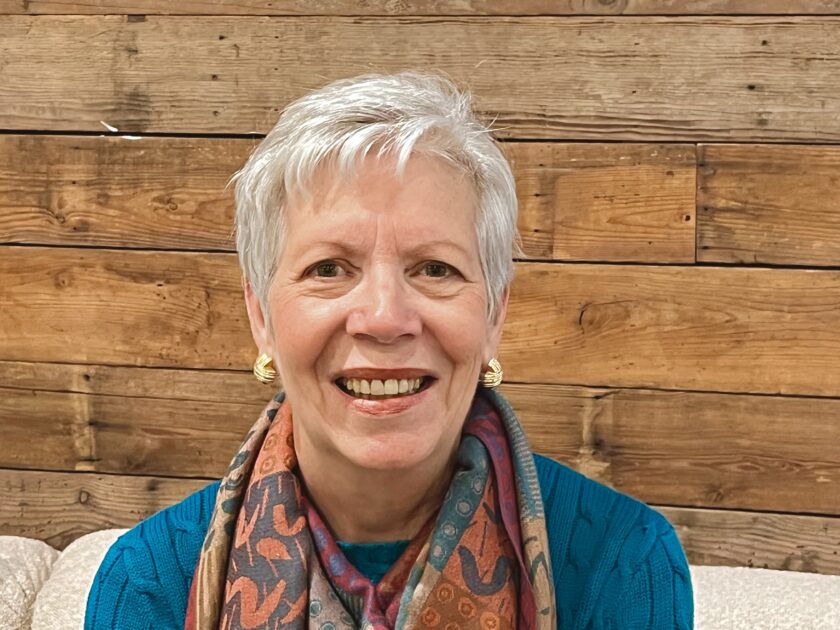
Social media has transformed how companies connect with their customers, create brand awareness, and drive sales. Platforms like Instagram, LinkedIn, Facebook, and TikTok enable businesses to tell creative and impactful stories, showcase compelling products and visuals, and significantly expand their reach. With a growing population of Gen-Z and digital-native buyers, a strong online presence is a non-negotiable piece of any successful marketing plan.
As social algorithms continuously evolve and become more complex, companies must embrace change, adapt swiftly, and pragmatically navigate the fast-changing nature of the online world. They can do this by implementing certain broader strategies.
One of the biggest keys to maintaining an effective and sustainable social media marketing plan is to resist the urge to have an account on every platform, post multiple times a day, and spread yourself too thin trying to remain relevant. Instead, figure out which platforms are best for your company’s specific goals and decide how you will use them.
“Everything we do on social media is intentional and filters through our company values before going out,” says Shona Heywood, digital content specialist for Counselor Top 40 distributor The Vernon Company (asi/351700). “I like to think of social media as the modern word-of-mouth marketing. It’s important to only tell the story that’s right for your brand.”
Following a loosely-structured content calendar can help a company stay on track with its goals and streamline its brand story. “We look quarterly at our initiatives and sketch a rough calendar for how social media will move us toward what we want to accomplish,” says Cord Himelstein, vice president of digital marketing at Counselor Top 40 distributor HALO Branded Solutions (asi/356000). “That said, you have to be flexible to respond to trends and current events and change your scheduled programming when necessary. With 1,000 reps, we always want to provide relevant materials for them as they go to market.”
Depending on the size of the company, it’s also worth employing a team of marketing professionals, ideally people from different age groups, to build your social media presence and stay on top of all the tech advancements.
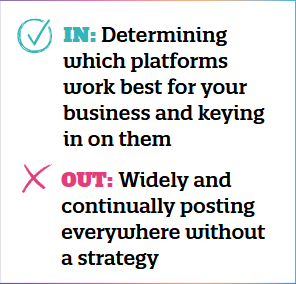
While those strategies work across all platforms, for promo suppliers and distributors, certain platforms are more effective than others for achieving particular goals. To navigate it all, it’s best to have an understanding of each platform, including its key features and which content performs best. Here in this primer, PPM explores the top platforms that print and promo pros are using and the savvy strategies and best practices they recommend.
Visually Compelling, Short-Form Storytelling (Used by 54% of distributors)
Instagram’s model allows users to feature photos and videos in a variety of formats: static images, Reels (video clips), stories, image carousels, and profile highlights to save content on specific topics. The algorithm favors Reels, which have a three-minute time limit. Instagram also recently launched Threads, a text-based feature challenging Twitter/X, that lets users share short messages, photos, videos, and links.
According to Social Pilot, more than 31% of total Instagrammers are in the 25-34 age group, a demographic that is conditioned for bite-sized content that can be liked and shared in a matter of seconds. ASI research also found that younger distributors were more likely to use Instagram for their business than older distributors.
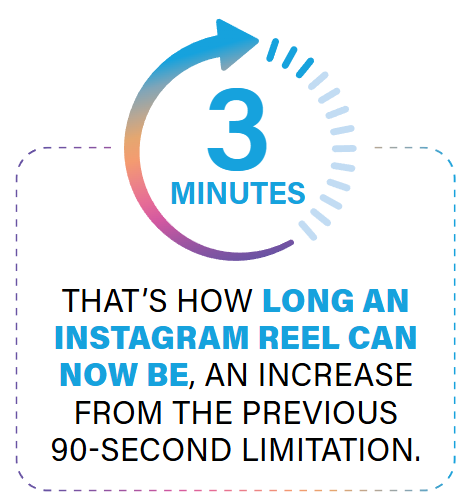
“The name of the game is movement,” says Natalie Whited, enterprise vice president of marketing at Orbus Visual Communications Group (asi/75209), which manages six unique brands. “Don’t overwhelm the reader with too much copy. You’ve got to be quick, and sometimes a GIF file works better than a static image.”
Distributors use Instagram to find and share product inspiration, show behind-the-scenes company footage, and educate customers on their capabilities and services through lifestyle videos. Client success stories and trade show coverage are also common themes for a profile grid or stories.
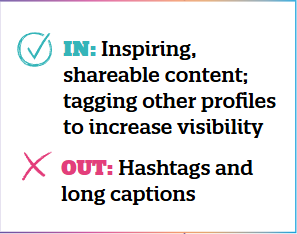
Pro tip: Be you and show some personality. “Creating short, relatable clips and prioritizing authenticity over production is what resonates on Instagram,” says Jackie Walker, vice president of performance marketing at Counselor Top 40 distributor iPROMOTEu (asi/232119). “Then you can extend the reach of that content by repurposing it on different channels, like YouTube Shorts.
Business-Forward, Long-Form Content (Used by 54% of distributors)
LinkedIn has remained the most business-oriented of all social media outlets, allowing for much longer-form information sharing, lead generation, and recruiting.
“LinkedIn is the best for thought leadership – industry trends, insights, brand building, and showcasing expertise in promo marketing,” says Himelstein. “It’s a great place to engage with our network of prospects, employees, and fellow business owners.”
HALO saw a 30% increase in its follower base on LinkedIn last year, surpassing 20,000. Himelstein credits the consistency and quality of HALO’s content, but also the popularity of the platform itself as a refreshingly professional – but still casual – option when most other social media platforms are heavy on the personal.
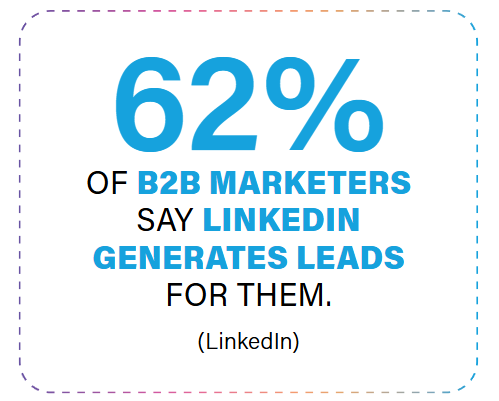
According to LinkedIn, 62% of B2B marketers say the platform generates leads for them. In promo, distributors share product launches, infographics about the efficacy of promo items, business awards and accolades, and other materials that reps can use when approaching prospective clients.
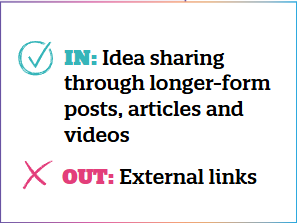
Like Instagram, LinkedIn now also prioritizes video content and posts that keep readers on the site longer. “In Q4 of 2023, our analytics showed that certain posts weren’t reaching nearly as many people as they used to,” says Heywood. “We watched it for six weeks and found out that the algorithm had changed to favor posts that included links to other LinkedIn content, and it was hiding posts that included links to other sites outside of LinkedIn.”
Facebook: Community Engagement, Company Culture (Used by 75% of distributors)
Promo companies engage with employees and build company culture on Facebook, primarily with those in the boomer, Gen X, and millennial generations. With the ability to like, share, comment, and create Facebook groups, reps engage from their personal pages for employee appreciation, holidays, company events, and philanthropy.
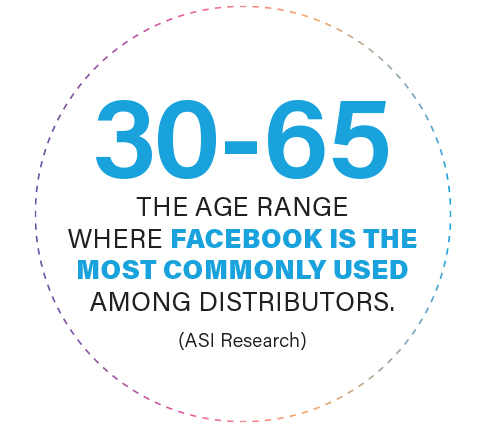
“Facebook allows us to stay connected with our affiliates and supplier partners, keeping relationships strong,” says Walker.
The Vernon Company finds that positive and heartwarming content ranks especially high on the company’s Facebook analytics. It also runs a regular “Vintage Vernon” segment that showcases retro pictures of the company’s history.
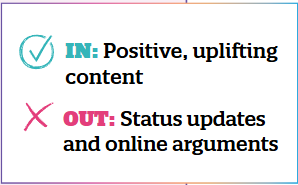
Also keep in mind: Some consumers, particularly those in the older millennial, Gen X, and boomer demographics, will research a company they’re potentially interested in working with on Facebook. Having an outward-facing page that represents your brand well and helps showcase what you can do, without being overly “salesy,” can be important.
Best Practices
DO:
Quality over quantity. Focus on a couple of platforms, and craft fewer but higher-impact posts that spark conversations. A well-researched, trend-driven post will perform better than generic content.
Research algorithm changes to know what’s coming. Companies like HeyOrca compile the latest news about all of the social media platforms to help you adapt quickly.
Use key performance indicators and in-app analytics to ensure you are getting the greatest return on your efforts.
DO NOT:
Overproduce content. People want authenticity and personality with less advertising jargon, and more behind-the-scenes moments and day-to-day insights.
Post and forget about it. Your audience expects a human on the other end of your accounts. Respond to comments and messages to build trust. Be sure to comment, react, tag, and share when appropriate.
Rely solely on social media scheduling and management tools. Cross-posting the same content to multiple platforms at once can save time, but beware that content shows up and performs differently on each platform. The algorithms don’t favor cross-posted content.
TikTok: Quick Bites, Questionable Future (Used by 10% of distributors)
eMarketer estimates that TikTok had 117.9 million monthly active users in the U.S. as of early 2025. The wildly popular app is known for quick videos with humorous and educational content. Some promo pros are wary of using TikTok, as it can be time-consuming to create videos and the future of the app remains unclear, given attempts to have it banned in the United States.
“When our distributor affiliates ask for guidance on how to use social media, we have moved away from suggesting TikTok because of the ongoing uncertainty with its presence in the U.S.,” says iPROMOTEu’s Walker. “Part of our mission is to save affiliates time in their businesses, so it doesn’t make sense for them to put much effort into a platform that may be unavailable tomorrow.”
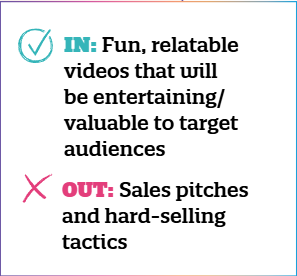
Even so, there are certainly marketers in promo that successfully use TikTok for brand building and client engagement. Flywheel Brands (asi/212986) relies on the app to create and distribute content that bolsters the Hixson, TN-based distributor’s brand, fostering connections with clients and, ultimately, helping to drive business. Videos focus on everything from behind-the-scenes looks and trend alerts, to relatable humor that humanizes the company and its people.
“TikTok is one of the biggest and most engaged social user bases globally,” says Katie Roudkovski, a marketing specialist at Flywheel Brands. “The short-form video content and viral trends play a central role in shaping online culture.”

